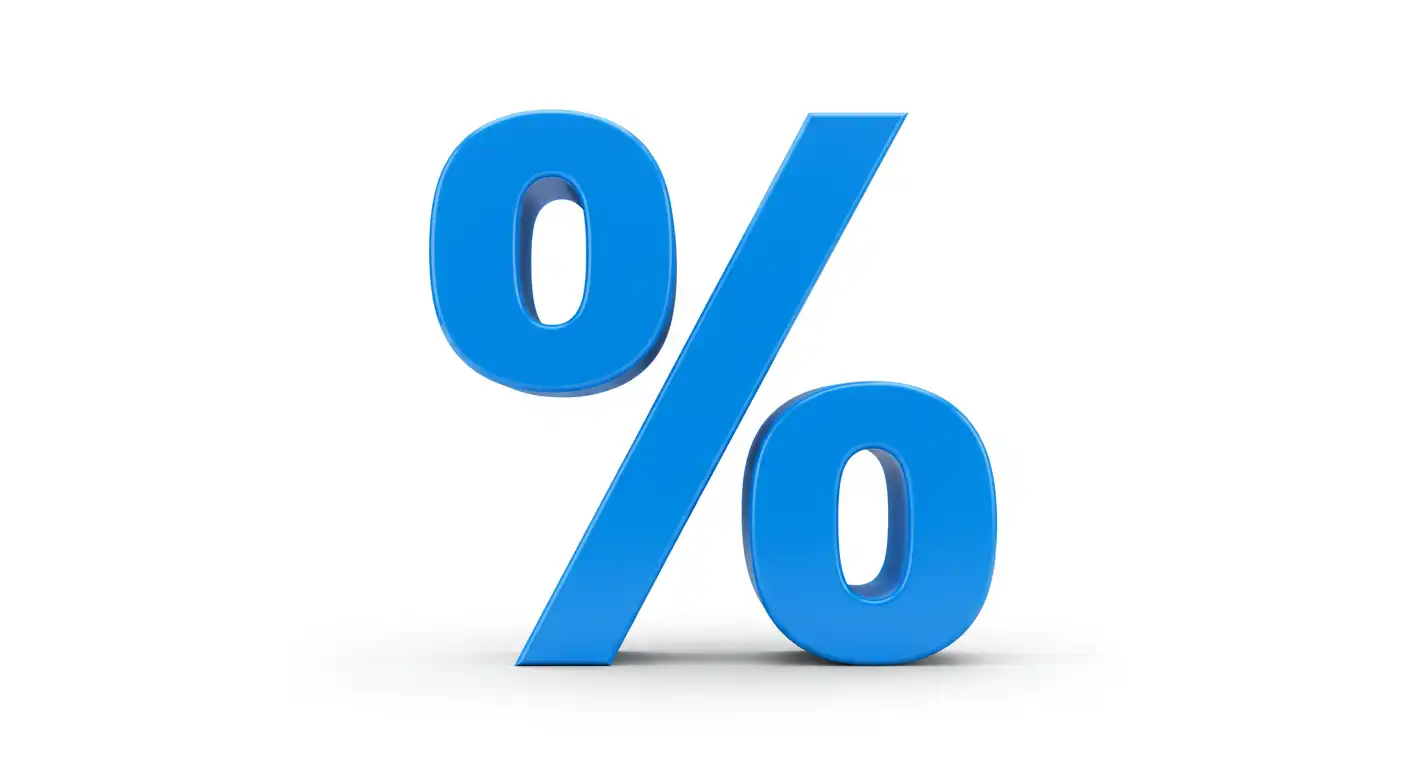Free Compound Interest Calculator
Compound Interest Calculator
Calculation Results
| Year | Total Contributions | Future Value (Low) | Interest Earned (Low) | Future Value (Avg) | Interest Earned (Avg) | Future Value (High) | Interest Earned (High) |
|---|
Found our Free Compound Interest Calculator useful? Bookmark and share it.

How to Use the Compound Interest Calculator
Here’s a step-by-step guide on how to use our compound interest calculator:
Initial Investment: Enter the starting amount of money you plan to invest. This is also known as the principal.
Monthly Contribution: If you plan to add money to your investment regularly, enter the amount you will contribute each month. If not, enter “0”.
Length of Time (Years): Enter the number of years you plan to invest your money.
Estimated Interest Rate (%): Enter the annual interest rate you expect to earn on your investment. This is an estimate, and actual returns may vary.
Interest Rate Variance Range (%): Enter a percentage to represent the potential fluctuation in the interest rate. The calculator will then show results for a high and low interest rate scenario, in addition to your average rate. For example, if you enter 2, and the interest rate is 5%, the calculator will calculate results for 3%, 5%, and 7%.
Compound Frequency: Select how often the interest will be calculated and added to your investment balance. You can choose from:
Annually
Semiannually (twice a year)
Quarterly (four times a year)
Monthly
Daily
Hourly
Calculate: Click the “Calculate” button to see the results.
The results will be displayed in two formats:
Interactive Chart: A line chart showing the projected growth of your investment over time, including your total contributions, and the future value of your investment in the low, average, and high interest rate scenarios.
Detailed Breakdown Table: A table providing a year-by-year breakdown of your investment, including:
Year
Total Contributions
Future Value (Low), and Interest Earned (Low)
Future Value (Avg), and Interest Earned (Avg)
Future Value (High), and Interest Earned (High)
You can use the calculator to explore different scenarios by changing the input values and observing how the results change. For example, you can see how increasing your monthly contribution or the length of time you invest can impact your long-term investment growth.
Interest Rates
An interest rate is the percentage of interest charged on a principal amount. It represents the cost of borrowing money or the return on a deposit account. For borrowers, it’s the fee charged by a lender for the use of assets, while for savers, it’s the compensation paid by a bank or credit union for holding their funds.
Understanding Interest Rates
In lending, interest is the fee a borrower pays for using an asset, which can include cash, goods, vehicles, or property. This fee is essentially the “cost of money.” Higher interest rates increase the cost of borrowing. Interest rates are a fundamental aspect of most lending and borrowing transactions. Individuals borrow for various reasons, such as purchasing homes, funding projects, starting businesses, or paying for education. Businesses borrow to finance capital expenditures and expand operations. Borrowed money is typically repaid either in a lump sum or through regular installments.
For loans, the interest rate is applied to the principal, which is the original loan amount. The interest rate serves as the borrower’s cost of debt and the lender’s rate of return. Lenders require compensation for the time they forgo using their money, as they could have invested it elsewhere. The difference between the total repayment and the original loan is the interest charged. Lenders assess the risk associated with a loan; lower-risk loans typically have lower interest rates, while higher-risk loans have higher rates. A borrower’s credit score is a key factor in this risk assessment.
Simple Interest Rate
Simple interest is calculated only on the principal amount of a loan. The formula for calculating simple interest is:
Simple Interest = Principal x Interest Rate x Time
For example, if you take out a $300,000 loan with a 4% simple interest rate for one year, the interest owed would be $300,000 x 0.04 x 1 = $12,000. The total amount to be repaid is $312,000. If that same loan was a 30-year mortgage, the interest would be calculated as: $300,000 x 0.04 x 30 = $360,000.
Compound Interest Rate
Compound interest is calculated on the principal and the accumulated interest from previous periods. This means that borrowers pay interest on interest, resulting in a higher total interest payment compared to simple interest loans, especially over longer periods.
The formula for calculating compound interest is:
Compound Interest = P x [(1 + Interest Rate)^n - 1]
Where:
P = Principal
n = Number of compounding periods
For instance, if Jayati takes out a three-year loan of $10,000 at a 5% interest rate, compounded annually, the interest paid would be: $10,000 * [(1 + 0.05)^3 – 1] = $1,576.25
Compound interest is beneficial for savings accounts. Banks use deposited funds to make loans and compensate depositors with compound interest. For example, if you deposit $500,000 into a high-yield savings account, the bank might use $300,000 for a mortgage loan. The bank pays you, the depositor, 5% interest annually, while charging the borrower 8%, netting a 3% profit.
APR vs. APY
The interest rate on consumer loans is usually quoted as the annual percentage rate (APR). The APR is the lender’s rate of return, but it does not account for the effect of compound interest within a year. For example, a credit card’s interest rate is expressed as an APR.
The annual percentage yield (APY), on the other hand, is the interest rate earned on a deposit account at a bank or credit union, and it does take compounding into account.


Who Determines Interest Rates?
Interest rates are influenced by the interplay of supply and demand for loans and credit within a free market, as well as the savings and spending decisions of individuals, businesses, and governments. In the U.S., the Federal Open Market Committee (FOMC) plays a crucial role in setting interest rates.
The Role of the Federal Open Market Committee (FOMC)
The FOMC comprises the seven governors of the Federal Reserve Board and five presidents of Federal Reserve Banks. This committee convenes eight times annually to determine the near-term direction of monetary policy and interest rates.
How Short-Term Interest Rates Are Determined
Central banks are responsible for setting short-term interest rates. Government economic observers develop policies aimed at maintaining price stability and liquidity. These policies are regularly reviewed to ensure an appropriate money supply within the economy—neither too large, which can lead to inflation, nor too small, which can cause deflation.
To decrease the money supply, policymakers raise interest rates, making it more attractive to deposit funds and less appealing to borrow from the central bank. Conversely, to increase the money supply, the central bank lowers interest rates, encouraging borrowing and spending.
The federal funds rate, which is the rate banks charge each other for overnight loans, influences the prime rate—the rate banks offer to their most creditworthy customers.
How Long-Term Interest Rates Are Determined
Long-term interest rates, unlike short-term rates, are often tied to the yields of 10- or 30-year Treasury notes. These yields are determined by market demand following auctions by the U.S. Treasury Department. Lower demand for these notes generally leads to higher interest rates, while higher demand pushes rates lower.
These long-term rates affect various financial products, including fixed-rate mortgages, car loans, student loans, and some credit card annual percentage rates. While typically lower than rates for revolving credit products, they tend to be higher than the prime rate. Many savings account rates are also determined by long-term Treasury notes.
Deposit and Loan Rates: Retail Banks
Retail banks also play a role in determining interest rates. The rates they offer on loans and mortgages can vary based on factors such as their business needs, market conditions, and the individual consumer’s creditworthiness. For instance, borrowers with lower credit scores, who are considered higher risk, typically face higher interest rates. This principle also applies to credit cards, where banks offer varying rates to different customers and may increase rates due to missed payments, bounced payments, or other services like balance transfers and foreign exchange transactions.
Individual Factors Affecting Interest Rates
Interest rates for individual loans, such as personal loans, mortgages, and corporate bonds, can differ from the general rates. Factors that influence these individual rates include:
Borrower Risk: High-risk borrowers with low credit scores pay higher rates than low-risk borrowers with high credit scores.
Loan Maturity: Longer-term loans may have different interest rates compared to short-term loans.
Loan Security: Loans secured by collateral generally have lower interest rates than unsecured loans.
Bond Features: Bonds with embedded options, such as callable bonds, typically have higher interest rates than those without such options.
The Effective Federal Funds Rate is at 4.33% as of March 17th 2025.
Retail banks assess the risk associated with lending to individuals when setting interest rates. Customers with good credit scores are seen as lower risk and receive lower rates, while those with lower credit scores are considered higher risk and are charged higher rates.
While the Federal Reserve doesn’t directly set mortgage and other loan rates, its actions influence the rates that retail banks charge. When the Federal Reserve raises benchmark interest rates, retail banks generally increase the interest rates they offer to customers.
In conclusion, interest rates are primarily determined by central banks, which actively manage them to achieve target levels. They intervene in the open market through open market operations (OMO), buying or selling Treasury securities to influence short-term rates. These short-term rates then affect a wide range of other rates, including those for mortgages, auto loans, corporate bonds, and bank deposits. Ultimately, the long-term direction of interest rates is shaped by the market’s supply and demand for loans and credit.
How Interest Rates Affect the U.S. Markets
Changes in interest rates have significant effects on both the stock and bond markets. Investors in these markets must pay close attention to consumer and business behavior, as interest rate changes can influence that behavior. When the Federal Reserve changes interest rates, it creates a ripple effect throughout the broader economy.
Impact on Stock Investors
For stock investors, higher interest rates typically lead to reduced spending. Conversely, lower interest rates encourage consumers to make major purchases and businesses to expand. These changes in spending and expansion directly impact corporate profits.
Impact on Bond Investors
Higher interest rates benefit new bond issues, which offer higher returns, but decrease the value of existing bonds with lower rates. Conversely, lower interest rates result in new bonds offering less interest, while existing bonds become more valuable and trade at a premium.
Understanding these relationships between interest rates and the markets helps investors make more informed financial decisions.
The All-Important Fed Funds Rate
The Federal Reserve (the Fed), the central bank of the U.S., adjusts interest rates to maintain a healthy rate of economic growth. It raises rates to combat inflation when the economy is growing too quickly and lowers rates to stimulate activity when the economy is sluggish.
The Fed influences overall interest rates by adjusting the federal funds rate, which is the rate at which banks lend money to each other overnight to maintain their cash reserves. Changes to the federal funds rate ripple through the economy, affecting rates for various financial products, including auto loans and business borrowing. While the stock market often reacts quickly to these changes, the broader economic impact typically takes about 12 months to materialize.
The Money Supply
The Federal Reserve manages the money supply through interest rate adjustments. Increasing the federal funds rate effectively reduces the amount of money available for borrowing, which helps to discourage inflation. Conversely, decreasing the federal funds rate increases the money supply, encouraging spending by making borrowing more affordable.
The Discount Rate
In addition to the federal funds rate, the Fed also sets the discount rate, which is the interest rate it charges directly to banks that borrow from it. The discount rate is usually higher than the target federal funds rate. However, it’s the federal funds rate that most directly impacts the stock market. The federal funds rate also serves as a benchmark for the prime interest rate (the rate banks charge their most creditworthy customers), mortgage loan rates, and other consumer and business loan rates.
How Interest Rates Affect Spending
The credit system enables individuals to spend money immediately, rather than waiting to accumulate sufficient savings. Lower interest rates make borrowing more attractive, encouraging consumers to take out loans for big-ticket items like houses and cars. When consumers pay less in interest, they are more inclined to spend more, creating a ripple effect of increased spending throughout the economy.
Businesses and farmers also benefit from lower interest rates. The lower cost of borrowing encourages them to invest in equipment and expand their operations, which, in turn, boosts economic output and productivity. Higher interest rates, on the other hand, force consumers to reduce spending, and banks to tighten lending standards, which negatively impacts business revenues.
Impact on Stocks
Rising interest rates make it more expensive for companies to raise capital through the issuance of bonds, as they must offer higher interest rates. This increased cost of capital can hinder a company’s growth prospects and reduce its earnings. Consequently, when interest rates increase, profit expectations may be revised downward, leading to a decrease in the company’s stock price. If many companies experience stock price declines, the overall market, as reflected in key indexes like the Dow Jones Industrial Average and the S&P 500, may also decline.
Lowered expectations for company growth and future cash flows make stocks less attractive to investors compared to other investments. However, some sectors, such as the financial industry (including banks, brokerages, mortgage companies, and insurance companies), tend to benefit from rising interest rates, as they can charge more for lending money. Additionally, consumer staples tend to be more resilient during periods of rising rates compared to discretionary goods.
Impact on Bonds
Interest rates and bond prices have an inverse relationship: when interest rates rise, bond prices fall, and vice versa. This relationship arises because existing bonds offer a fixed interest rate. If prevailing interest rates increase, newly issued bonds offer higher returns, making older bonds with lower returns less attractive, and therefore less valuable. Conversely, if interest rates fall, existing bonds with higher fixed rates become more valuable.
For example, consider a bond with a $1,000 face value and a 5% annual interest rate ($50 per year), issued when prevailing rates are also 5%. If interest rates later rise to 10%, a new $1,000 bond would pay $100 per year. The existing 5% bond would have to sell for less than $1,000 to be competitive. If, instead, interest rates fall to 1%, a new $1,000 bond would only pay $10 per year, making the 5% bond very attractive and more valuable.
Opportunities for Bond Investors
For income-oriented investors, a decrease in the federal funds rate can reduce opportunities to earn interest. Newly issued bonds, including U.S. Treasury bonds, will offer lower interest payments. A decrease in interest rates may also prompt investors to shift their investments from the bond market to the stock market, seeking higher returns.
Conversely, when interest rates rise, newly issued bonds offer better interest payments, but the values of existing bonds decrease.
How Interest Rates Affect Inflation and Recession
Inflation, the rate at which prices increase over time, can result from a strong economy. However, uncontrolled inflation can significantly erode purchasing power. The Fed monitors inflation indicators like the Consumer Price Index (CPI) and the Producer Price Index (PPI). When these indicators rise more than 2% to 3% annually, the Fed may raise the federal funds rate to control rising prices.
Higher interest rates increase the cost of borrowing, which eventually leads to reduced spending and a decrease in demand for goods and services. This drop in demand can help to bring inflation under control. A notable example is the period between 1980 and 1981, when the Fed raised interest rates to 19% to combat 14% inflation. While this action caused a severe recession, it successfully curbed inflation. More recently, from 2022 to mid-2023, the Fed steadily raised rates to address inflation largely triggered by the COVID-19 pandemic. The sensitivity of a bond’s price to interest rate changes is measured by its “duration”; bonds with longer maturities are more sensitive to interest rate fluctuations.
The Effect of Expectations
Expectations of rising or falling interest rates influence the behavior of consumers and businesses. When interest rates are expected to rise, both groups tend to reduce spending, causing earnings to fall and stock prices to decline. Conversely, when interest rates are expected to fall, consumers and businesses increase spending and investment, which can lead to rising stock prices. Stock traders often try to anticipate these changes rather than reacting after they occur.

Disclaimer: The content provided on this webpage is for informational purposes only and is not intended to be a substitute for professional advice. While we strive to ensure the accuracy and timeliness of the information presented here, the details may change over time or vary in different jurisdictions. Therefore, we do not guarantee the completeness, reliability, or absolute accuracy of this information. The information on this page should not be used as a basis for making legal, financial, or any other key decisions. We strongly advise consulting with a qualified professional or expert in the relevant field for specific advice, guidance, or services. By using this webpage, you acknowledge that the information is offered “as is” and that we are not liable for any errors, omissions, or inaccuracies in the content, nor for any actions taken based on the information provided. We shall not be held liable for any direct, indirect, incidental, consequential, or punitive damages arising out of your access to, use of, or reliance on any content on this page.
Trusted By
Trusted by 3.2M+ Employees: 21 Years of Service Across Startups to Fortune 500 Enterprises
Join our ever-growing community of satisfied customers today and experience the unparalleled benefits of TimeTrex.










Strength In Numbers
Join The Companies Already Benefiting From TimeTrex
Time To Clock-In
Start your 30-day free trial!
Experience the Ultimate Workforce Solution and Revolutionize Your Business Today
- Eliminate Errors
- Simple & Easy To Use
- Real-time Reporting

Saving businesses time and money through better workforce management since 2003.
Copyright © 2025 TimeTrex. All Rights Reserved.
